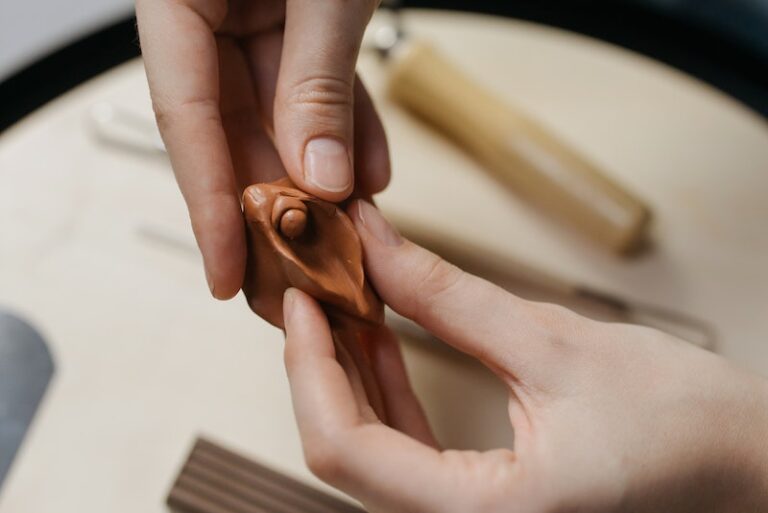Most women’s hymen is a thin flap of tissue that encircles the bottom of their vaginal opening. It thins and tears over time, due to daily activities, hormonal changes, tampon use and, sometimes, even intercourse.
It’s not uncommon to hear that your hymen needs “popping” or that you need to have penetrative sex so it can break. But this is completely untrue.
The Hymen
The hymen gets a bad rap for being an indicator of virginity, but it has nothing to do with sexual activity. It is a circular flap of tissue that covers the entrance to your vagina. It is very thin and can look different from one person to the next, and it serves no specific function.
It’s also common for a hymen to tear without having any type of sexual activity, and some people were born with a very small hymen. This can make it harder to insert tampons and may cause painful periods.
Many girls buy into the myth that a hymen needs to be broken in order to have sex, and this can lead to rough fingering during penetration and aggressive thrusting with a penis. It’s more likely that a hymen will slowly tear over time, especially if you use lubrication regularly and have relaxed intercourse.
The Vaginal Opening
From the outside, the female external genitalia looks like it’s covered or wrapped with two pairs of lips. These are called the labia majora and labia minora, and they are part of a whole called the vulva, which also includes your hymen, clitoris, and urethra.
The vulva has lots of nerve endings that feel pleasure when a penis or a finger, or a sex toy goes into it. You may use lubrication to help the insertion and removal of things like these go more smoothly.
The vulva is sometimes referred to as the “birth canal” when discussing childbirth, because babies travel through it to enter the world. During sex, the vaginal opening is where sperm enters the body to fertilize an egg. It’s where the uterus lining sheds each month, and where tampons or menstrual cups are inserted to manage the flow. It’s also where you get discharge that sometimes changes color, smells or thickness throughout your menstrual cycle.
The Vaginal Wall
The walls of the vagina are composed of layers of different tissue. The outer layer is a mucosal membrane similar to that which lines the mouth, nose and digestive tract. This is called the lamina propria and is usually a reddish-pink color. It contains a delicate ecosystem of bacteria and fungus (also known as your microbiome) that help keep the area healthy and infection-free.
Above the lamina propria is a layer of smooth muscle tissue called the muscularis. This layer is rich in collagen and elastin which give the vagina structure and the ability to stretch during sexual arousal.
The innermost part of the vagina is a tube called the vulva. The vulva has two primary functions: sexual intercourse and childbirth. The vulva is part of a fibromuscular tubular passage that leads from the urethra to the uterus. This passage also includes the clitoris, which is a glans that is responsible for sexual pleasure.
The Labia Minora
The clitoris and labia minora are paired, hairless folds of skin. They are pink in color, and they cover the opening to the vagina and the urethra. They are sensitive to stimulation and have a rich supply of blood vessels, which makes them engorged with blood when sexually stimulated.
The inner lips (labia minora) are smaller than the outer lips, and they cling to the hymen as it opens and closes during intercourse. The hymen is also protected by a layer of tissue called the septum vulvae, which is a tough membrane that covers the labia majora and is thick and dense.
Labia minora can vary in shape, size, and location from one woman to the next. They can be rounded or flat, wrinkled or smooth, lopsided or symmetrical. These variations are perfectly normal and are what make a person’s vulva unique and recognizable as her own.
The Labia Majora
The vulva includes a pair of rounded folds called the labia majora, which are also known as the outer and inner lips. These lips wrap around the urethral and vaginal openings to protect them from damage. They are also a place where the Bartholin’s and Skene’s glands release a mucus-like fluid that functions as a lubricant during intercourse.
The upper portion of the labia majora are connected to each other by a longitudinal skin fold called Hart’s lines, which demarcates the transition from the smooth appearance of the vulva vestibule to the rounded appearance of the labia majora. The lower portions of the labia minora descend obliquely to enclose the clitoris and then form fourchettes in front of and behind the clitoral hood. During sexual arousal, the labia minora become engorged with blood and appear edematous.
It’s normal for the inner and outer lips of the vulva to vary in shape, size and color. Asymmetrical labia are common, and no one type of vulva is better or worse than another.
The Clitoris
The clitoris is the sensitive area on the top of your vulva, which can be stimulated by touching and internal play. It can also make you feel sexually aroused and lead to climax (or orgasm).
It’s pea-shaped and looks a bit like a wishbone. The tip, known as the glans clitoris, sticks out at the apex of the two labia majora (the outer lips that might have hair on them) and is covered by a flap called the clitoral hood.
That pea-sized nub is the only part of the clitoris that can be seen, but it’s not just that. The rest of it stretches inside the body with legs (called crura) and vestibular bulbs that wrap around the vagina, Deysach says. It’s packed with erectile tissue and expands when you’re sexually aroused. It’s also attached to the labia and structures called the mons pubis and the urethral opening by ligaments, which keep it bent.
See Also:


